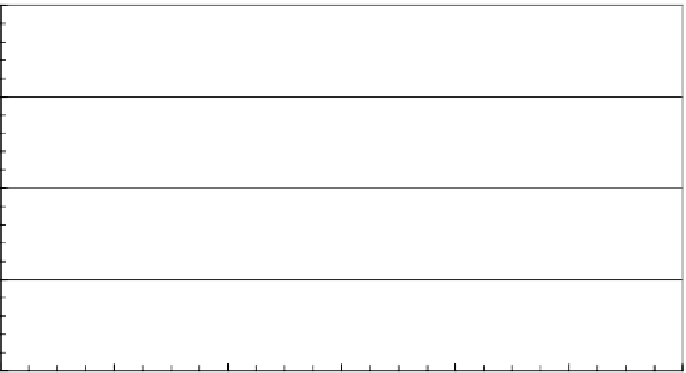Environmental Engineering Reference
In-Depth Information
The bronchial dose coeficients for a range of median particle diameters from 1 to 1000 nm
(0.001-1 μm) are shown in Figures 21.5 and 21.6 from UNSCEAR (2006). Figure 21.5 calculates the
dose coeficient as a function of breathing rate and Figure 21.6 calculates the dose coeficient as a
function of the unattached (or nanometer size) decay products present in the decay product mixture.
The unattached fraction, fpot, is speciied as the fraction they contribute to the potential energy of
Dose factors for selected breathing rates
fpot = 0.05
100
1.2 m 3 h
-1
nasal
1.2 m 3 h
-1
oral
0.6 m 3 h
-1
nasal
0.3 m 3 h
-1
nasal
75
50
25
0
0
200
400
600
800
1000
1200
Median aerosol diameter (nm)
Median σ
g
= 2
FIGURE 21.5
222
Rn bronchial alpha dose coeficients as a function of breathing rate. (From UNSCEAR,
Sources-to-Effects Assessment for Radon in Homes and Workplaces
, United Nations Scientiic Committee on
the Effects of Radiation, New York, 2006.)
Breathing rate 0.6 m
3
h
-1
100
75
50
25
0.02
0.05
0.1
0.2
0
0
200
400
600
800
1000
1200
Median aerosol diameter (nm)
FIGURE 21.6
222
Rn bronchial alpha dose coeficients as a function of unattached or nanometer fraction.
(From UNSCEAR,
Sources-to-Effects Assessment for Radon in Homes and Workplaces
, United Nations
Scientiic Committee on the Effects of Radiation, New York, 2006.)





































































































































































Search WWH ::

Custom Search